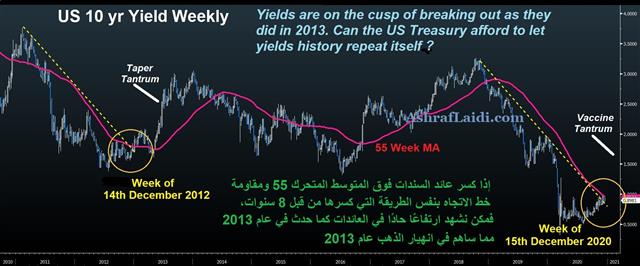Fed to Move, But When?

The Fed is facing a tough decision on Wednesday as it attempts to balance various priorities. Since the start of the pandemic, Powell has highlighted how the central bank will be there for workers. With unemployment still high, fiscal stimulus programs winding down and the prospect of a dark winter with more lockdowns, he will be inclined to offer more accommodation via increased QE.
At the same time, equities are in a raging bull market and dollar weakness is one of the reasons that commodity prices are rising, increasing the odds of a quick rebound in inflation. The housing market is also red hot as a side effect of extremely low rates, something we will get a reminder of on Tuesday with US housing starts and existing home sales.
Officials have also signaled that they want to see how the economy develops in the months ahead, meaning there will be some pushback against any action.
There are two paths to compromise: 1) The FOMC could stand pat but deliver a statement that indicates a high likelihood of future action, albeit with some conditions; leaving enough room for a climbdown if economic data continues to beat expectations and congress delivers stimulus 2) The Fed alluded to the Bank of Canada's decision to taper QE but shift asset purchases to the long end in the latest minutes. They could deliver a riff on that by leaving QE unchanged but shifting the weighted-average of purchases to later dates.
What would those moves mean for the dollar? On policy alone, it's not a big shift and (all else equal) it wouldn't have a large effect. Yet, what it does is to signal a willingness to act, which also signals a desire to stay accommodative. Both of those are significant dollar negatives and both would help to underpin the ongoing trend of USD-weakness and risk asset strength.Latest IMTs
-
Gold During Recessions & Bear Markets
by Ashraf Laidi | Dec 13, 2025 12:29
-
AAOI & the Fed
by Ashraf Laidi | Dec 11, 2025 19:22
-
3 Qstns for Today's Fed Meeting
by Ashraf Laidi | Dec 10, 2025 15:40
-
5 Stocks Worked for me Best in 2025
by Ashraf Laidi | Dec 5, 2025 14:42
-
Silver 150 Highly Plausible
by Ashraf Laidi | Dec 4, 2025 11:19







